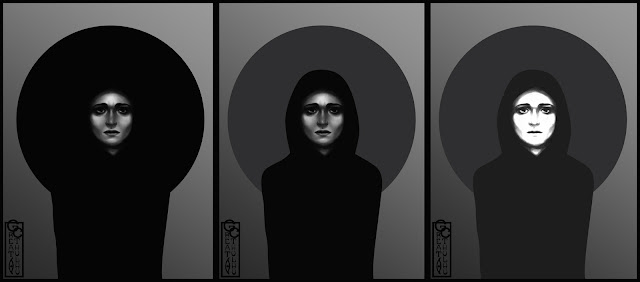Le nozze di Figaro – The Marriage of Figaro
Le nozze di Figaro – The Marriage of Figaro
The word ‘opera’ is Latin and means ‘the works’; it represents a synthesis of all the other arts: drama, vocal and orchestral music, dance, light and design. Consequently, it delivers an emotional impact which none of the others can match. The only one of the arts whose origins can be precisely dated, it was ‘invented’ in Italy in 1597 as part of the renaissance – the rebirth of interest in classical values. As an art form it is truly international, crossing all linguistic and cultural barriers, and it is probably the only one whose audience continues to expand, not in spite of, but because of developments in entertainment technology.
From its early origins in Italy opera spread across Europe, establishing individual and distinctive schools in a number of countries. France had an early and long-standing love affair with it – hence the term grand opéra, referring to the massive five-act creations that graced the Paris Opéra in the nineteenth century. Germany had an excellent school from as early as Mozart’s time, and opera perhaps reached its highest achievement with the mighty music dramas of Richard Wagner. Russia, Great Britain and the Americas have also made their contributions.
In the popular imagination, however, opera remains an Italian concept – and no wonder. From its earliest years Italians dominated the art: Cavalli and Monteverdi were among the first to establish its forms; there was a golden age, called the bel canto, at the beginning of the nineteenth century when Bellini, Donizetti and Rossini ruled supreme; Giuseppe Verdi was probably the most revered artist in history; and, for many, Puccini represents in every sense the last word in this beloved genre.
Although the twentieth century has not been as lavishly endowed with opera composers, it can still boast a few, including Richard Strauss, Igor Stravinsky and Benjamin Britten – and, maybe most significantly in the long run, those errant step-children of opera, the Broadway musical and the Lloyd Webber spectacular.
An opera in four acts by Wolfgang Amadeus Mozart. Libretto by Lorenzo da Ponte (1749–1838) after La Folle Journée ou Le Mariage de Figaro by Pierre-Augustin Caron de Beaumarchais (1732–1799). First performance: Vienna, Burgtheater, 1 May 1786. First UK performance: London, Haymarket, 18 June 1812.
Le nozze di Figaro – the marriage of Figaro
One definition of a masterpiece could be a work that delights successive generations and gives pleasure to people of different levels of sophistication. On that basis The Marriage of Figaro qualifies as the supreme operatic masterpiece. An impossible claim? Not really, because Mozart’s superb comedy of human relations has been enjoyed for over 200 years at the level of a very sophisticated situation comedy; it can overwhelm us with its melodic invention and can move us to tears by the aching beauty in its expression of the poignancy that lies at the heart of all our lives. To this can be added an insight into the historical context of its time more revelatory than a shelf of history books.
The opera’s action takes place on the eve of the French revolution, that great watershed in western history and the event that set the pattern for future political and social reform. When Figaro plots against his master Count Almaviva we need to think not of the cheeky valet risking reprimand but of a member of the proletariat risking his life to challenge an entrenched autocracy.
It has been said that the greatest works of art are not always those that break new ground but rather those that have the last word on a style or period. Very occasionally there appears a genius who can both say the last word and move an art form into a new era. Beethoven took the symphony and bridged the gap from the formal certainties of the Classical period through to the turbulence of the romantic. Wagner said the last word on romantic opera and paved the way for the dissonances of twentieth-century music. The Marriage of Figaro both incarnates the values of the ancien régime and points the way to the political turmoil of the nineteenth century from which modern democracies will be formed.
The opera has remained in the standard repertoire for over two hundred years, so therefore meets our first criterion of a masterpiece. Though received with only moderate enthusiasm at its first performance in Vienna it soon established itself as a work of incredible daring. The brilliant use of ensemble creates marvelous architectonic finales which are as much a glory of western art as the soaring medieval cathedrals that they resemble.
It is, however, in its fulfillment of the second criterion of a masterpiece that The Marriage of Figaro gains our admiration and love. To the child that was evident in Mozart and lies deep in all of us, Figaro is a wonderful adventure story, with plot and counter-plot, danger and disguise, intrigue and mystery. To the student of human sexuality it presents a tableau from the naive ardency of young Cherubino, through the worldliness of Susanna and the raw lust of Almaviva, to the sublime resignation and forgiveness of the Countess.
However, none of this – brilliant characterization, superb plot, wonderful dramatic situations – counts for anything without music of genius. Again it is all about levels of sophistication: the child can be delighted by Figaro’s ‘Non più andrai’, the lover can sigh with the Countess’s ‘Dove sono’, and the rest of us sit in awe as the massive Act II finale builds over more than twenty minutes from a duet to a nonet of such dazzling versatility that the most sophisticated critic is silenced in admiration. This surely is the greatest operatic masterpiece of them all.









Comments
Post a Comment